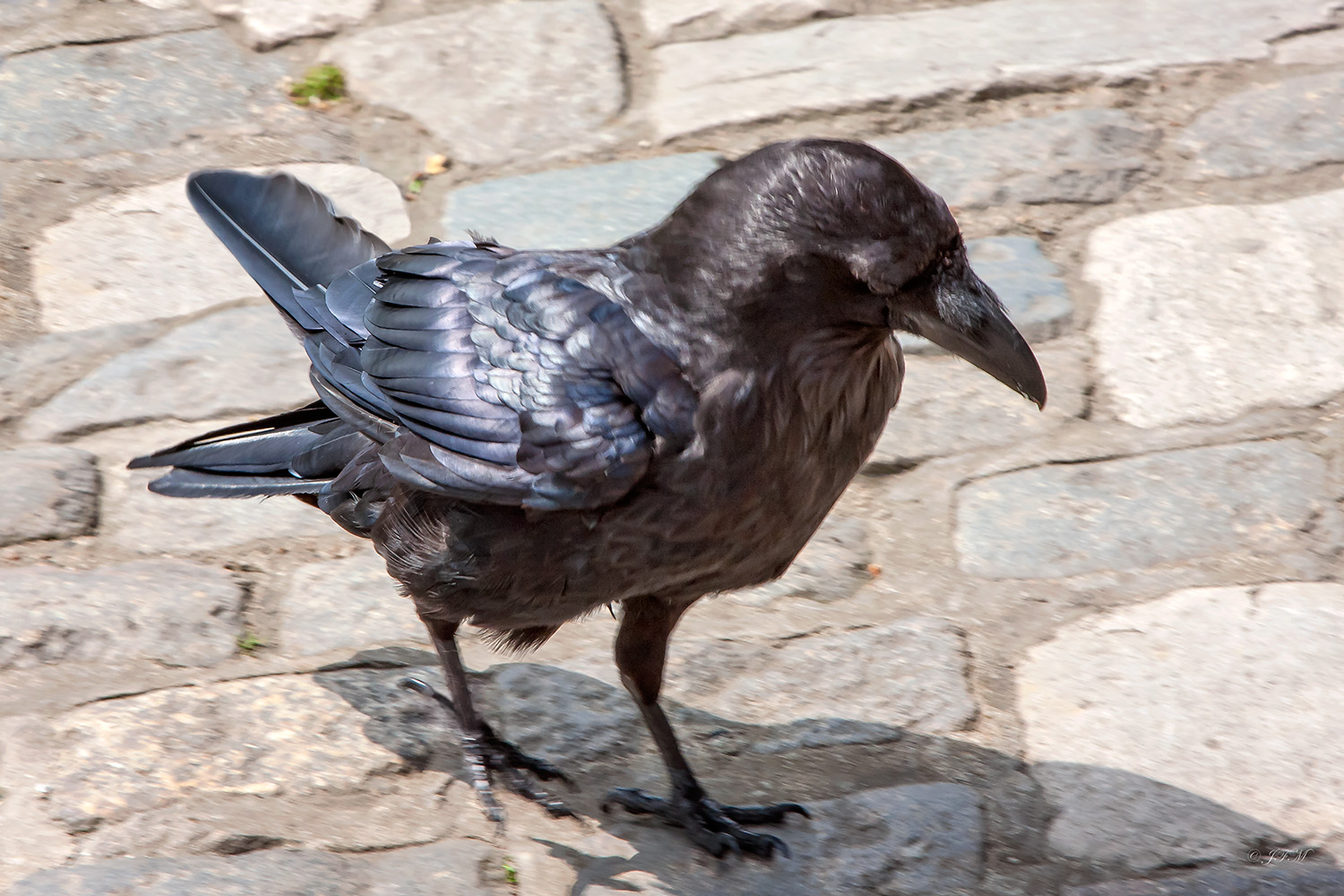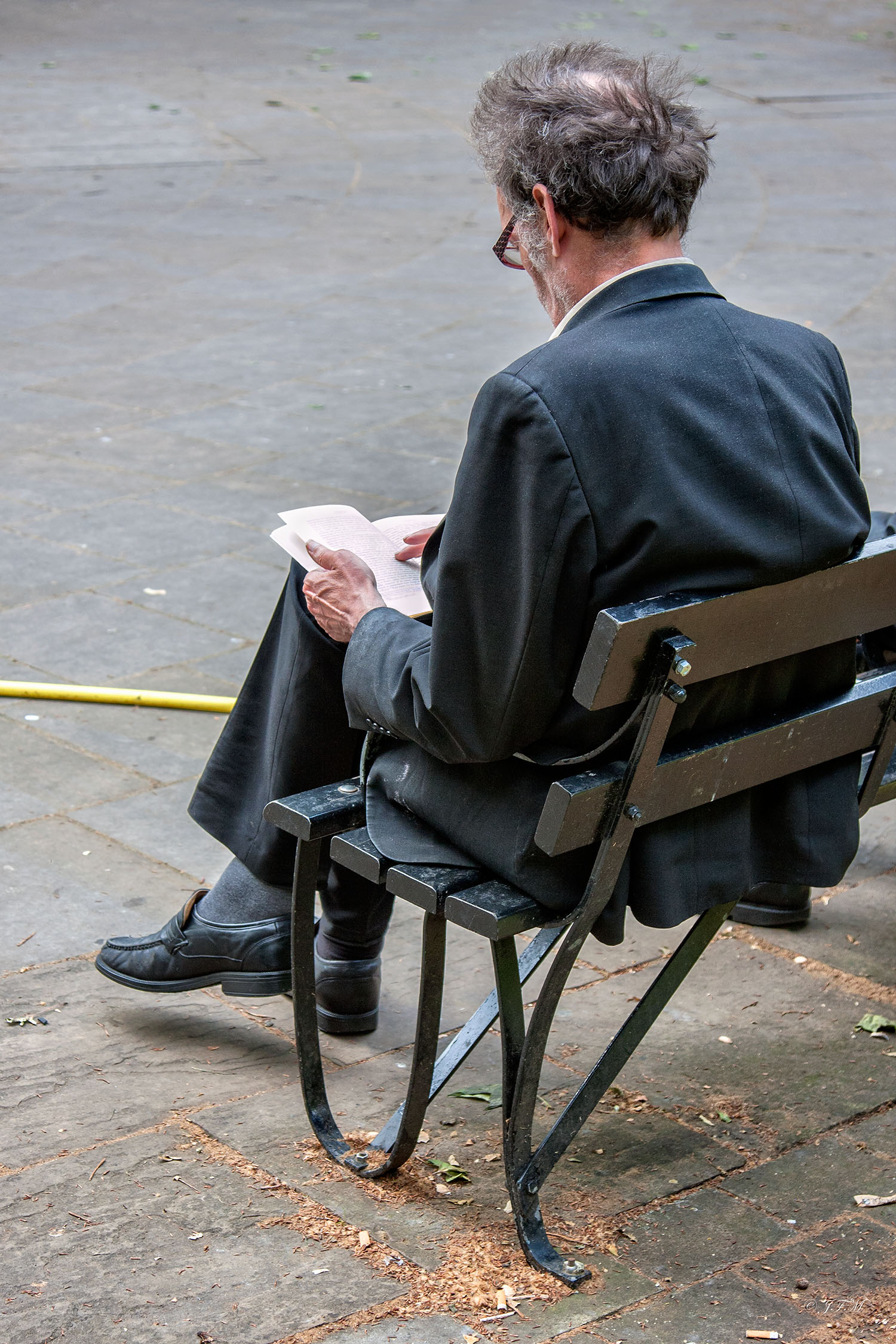
Tower Bridge
Tower Bridge as seen through the trees inside the Tower of London ramparts. It (built 1886–1894) is a combined bascule and suspension bridge in London. The bridge crosses the River Thames close to the Tower of London to connect the City of London directly to the northern landfall in Tower Hamlets. It has become an iconic symbol of London. The bridge's present colour scheme dates from 1977, when it was painted red, white and blue for Queen Elizabeth II's Silver Jubilee. Originally it was painted a mid greenish-blue colour

Tower Raven
The presence of the ravens is traditionally believed to protect the Crown and the Tower; a superstition holds that "If the Tower of London ravens are lost or fly away, the Crown will fall and Britain with it." One legend attributes the start of the tradition of keeping 7 ravens with clipped wings in the Tower of London to Charles II (reigned 1660–1685) and to his royal astronomer John Flamsteed, although there are versions of the legend that differ in their details. According to one legend, John Flamsteed complained to Charles II that wild ravens were flying past his telescope and making it harder for him to observe the sky from his observatory in the White Tower. Flamsteed requested that the birds be removed, but Charles II refused to comply with this request. The Greenwich Observatory was commissioned by the King in 1675 and the telescope moved there.
During World War II, only one raven was able to survive the hardships of the bombing during the Blitz, so the Prime Minister, Sir Winston Churchill, ordered more ravens to be brought in, in order to bring the flock up to the correct size. The Tower ravens are enlisted as soldiers of the Kingdom, and were issued attestation cards in the same way as soldiers and police. As is the case with soldiers, the ravens can be dismissed for unsatisfactory conduct

The Centre Page
Traditional Pub located on the North side near St. Pauls Cathedral on the walkway to the Millennium Bridge that crosses the Thames River to Shakespeare's Globe Theater at 29-33 Knightrider St., St. Pauls. London, Greater London, UK. It serves the Iconic “fish & chips” , as well as, Lamb & Mint meat pie, Bangers n' Mash. (the term "bangers" has its origins in World War II, the term was actually in use at least as far back as 1919. The term "bangers" /sausage is attributed (in common usage in the UK) to the fact that sausages, particularly the kind made during World War II under rationing, were made with such a high water content that were more liable to pop under high heat if not cooked carefully, due to pressure of steam; modern sausages do not have this attribute.)

#15 Stop St. Pauls
Woman waiting for the #15 bus at the stop for St. Paul’s Cathedral London, Greater London, UK. St. Paul’s Cathedral is an Anglican cathedral, the seat of the Bishop of London and the mother church of the Diocese of London. It sits on Ludgate Hill at the highest point of the City of London. Its dedication to Paul the Apostle dates back to the original church on this site, founded in AD 604.

Batavus
Batavus is a Dutch bicycle manufacturer founded in 1904 based out of Heerenveen, Netherlands

Yellow Door New Globe Walk
New Globe Walk is the street the recreation of Shakespeare's Globe theatre is located on just to the left of this house. Walk across the Millennium Bridge that crosses the Thames River to 21 New Globe Walk Bankside London SE1

Millennium Bridge Bubble
The Millennium Bridge is reflected in this bubble. It crosses the Thames River to Shakespeare's Globe theatre at 21 New Globe Walk Bankside London SE1

Peelers/Bobbies
Bobbies in front of Buckingham Palace June 13, 2015 for the annual Queen's Birthday Parade. The British police force was created in pre-Victorian England, when the British home minister, Sir Robert Peel (1778-1850), oversaw the creation of London’s first organized police force. Instead of the resented military red coats, Peel’s patrolmen wore black jackets and tall wool hats with shiny badges. They went out armed only with a short club and a whistle for summoning backup, walking regular beats and working to gain the trust of the local citizens. Robert Peel’s system was a success, and by the mid-19th century large American cities had created similar police forces. In London, the policemen were so identified with the politician who created them that they were referred to as “Peelers” or—more memorably—“Bobbies,” after the popular nickname for Robert.

Merida
This Merida was outside the Imperial Hotel Russell Square Park, London. Merida Bikes are German engineered bikes manufactured in Taiwan. It is Taiwan's second largest bicycle manufacturer after Giant.

Sunday Russell Square Park
Sunday afternoon is traditionally spent relaxing/sunning/reading outdoors in a green space like Russell Square Park. It is a large garden square in Bloomsbury, in the London Borough of Camden. It is near the University of London's main buildings and the British Museum. The square contained large terraced houses aimed mainly at upper-middle-class families. A number of the original houses survive, especially on the southern and western sides. Those to the west are occupied by the University of London, and there is a blue plaque on one at the north west corner commemorating the fact that T. S. Eliot worked there for many years when he was poetry editor of Faber & Faber.

Reading in the Park
Sunday afternoon is traditionally spent relaxing/sunning/reading outdoors in a green space like Russell Square Park. It is a large garden square in Bloomsbury, in the London Borough of Camden. It is near the University of London's main buildings and the British Museum. The square contained large terraced houses aimed mainly at upper-middle-class families. A number of the original houses survive, especially on the southern and western sides. Those to the west are occupied by the University of London, and there is a blue plaque on one at the north west corner commemorating the fact that T. S. Eliot worked there for many years when he was poetry editor of Faber & Faber.

Deus ex Machina
Looks like a Deus ex Machina (god from the machine) bicycle in Russell Square Park, London.
Greater London











